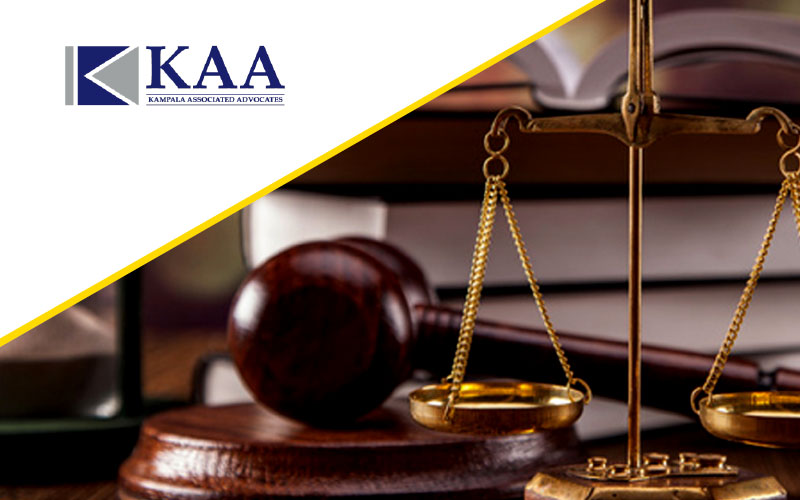There is no app for being a better lawyer. No program will make your arguments more logical or public speaking better or tilt the case law in your favor. Technological tools do for the legal profession what automobiles do for industry in general: they help us do things faster and perform tasks that would otherwise be impossible or impractical.
My job is to help my clients in the most effective and efficient way possible. I can do a good job of doing that on my own, but technology can help me do a better job because I can be faster and do things that would not be possible otherwise. Technology helps me focus on what I’m doing instead of how I’m going to do it.
Of course, the above is only but the current status, as there are concerted efforts to perfect machine learning through the many artificial intelligence projects currently being piloted, that in principle at least, will ultimately be able to make opinions, arguments and judgments, tasks that are currently presumed to be the preserve of human beings.
Trends in the legal sector
- For a long time, corporations have treated legal services as an unavoidable and unpredictable cost, associated with dispute resolution rather than prevention. This is no longer the case. Along with these changes, the roles of the in-house team and general counsel have altered dramatically. Keeping more work in-house to cut costs is a major trend. This has been witnessed in Uganda Revenue Authority (URA), Uganda National Roads Authority (UNRA), Uganda Communications Commission (UCC) and many other parastatals. This definitely reduces the business available to the private law firms.
- The imperative to keep costs low is the most powerful driver of change today. It has already transformed the corporate sector. It will eventually permeate every corner of the legal services market yet value, efficiency, and a deep knowledge of clients’ needs – not simply the cheapest service – are the characteristics that are winning work for firms.
- The push for lower costs and budget certainty has led away from purely time-based billing. Added value is being sought by general counsel via the delivery of seminars for staff, access to free legal resources, access to relationships or networks and the provision of technology solutions like online data rooms for matters with multiple counter-parties or large transactions, and free storage portals for client precedents or deal papers.
- E-Justice. One of the key development objectives in many governments is that of e-government. As part of this drive, e-justice is beginning to take root without the need for litigants or counsel to visit any physical court premises from commencement of litigation to the conclusion. This requires technological investments by law firms to meet the needs and requirements of the new court system.
- Migration of legal work to non-law firms. The current work landscape is witnessing a dual competitive ‘intrusion’; first is the migration of work by clients from law firms to professional providers other than law firms such the big four accounting firms (Deloitte, Ernst & Young (EY), KPMG and PricewaterhouseCoopers (PwC). Secondly, the emergence of millennials and the legal entrepreneurs, who pride themselves in being industry disruptors and are not scared or chained by restrictive regulatory limitations. These pride in upsetting the status quo and are already impacting the legal buy/sell dynamic by introducing new, technology and process enabled, agile legal delivery models. They are converting many legal ‘services’ into ‘products especially in the compliance, contract, and regulatory areas.
- Developments in the Law. With the ever increasing importance of technology in the day to day life, legal developments in Europe (General Data Protection Regulation(GDPR) and in Uganda (The Data Protection Act, 2019), have established strict obligations for law firms in their capacity as either data collectors or controllers. The fact that law firms ordinarily receive instructions and execute work for clients from different jurisdictions such as Europe, ordinarily triggers legal obligations and duties that necessitate the adoption of compliant practical and technological tools that will ensure compliance with the provisions of the law.
- Other trends apparent in late 2015 to date include:-
- Large firms investing more in technology development and buying equity in legal start-ups.
- General Counsel asked panel law firms to report on their inclusivity and diversity.
- They were applying metrics to better cost and resource legal matters. In 2016 the pace of change continued to accelerate.
- Digitization of legal services by government authorities and registration bodies such as Uganda Registration Services Board (URSB).
- Citizens sought cheap solutions to their legal needs over the internet. As clients seek to save costs and government agencies have slowly digitised services, more people are taking more steps to secure their rights unaided — such as registering a company; obtaining trademark certificates, for example — only to seek legal advice when a problem arises.
- The end-to-end paperless conveyance in Australia. A standardized national conveyancing system has been implemented in Australia to allow numerous property transactions to take place entirely paperless via the online platform Property Exchange Australia (PEXA).
- Blockchain and cryptocurrencies also found their way into the mainstream discussion.
- Clients are demanding for cyber security in the law firms arising from the data breaches in Mossack Fonseca (Panama Papers leak) and the many data breaches in many other law firms.
- Clients of all kinds want their lawyers to know exactly what drives them. In a commercial setting, this means understanding the markets in which clients operate, being familiar with the clients’ internal policies and procedures. Engagement and collaboration of this kind can lead to sound, strategic advice and shared platforms for service delivery.
In many ways, the legal field is more of a buyer’s market and an increasingly well-informed clientele. Gone are the days of lawyers dictating; how work is done and how fast, the cost of doing it and leaving clients literally at their mercy. The current buyers’ market has created the conditions that demand that lawyers generally and law firms, adopt new models of practice to succeed and maintain relevance.
On account of the above, clients have become increasingly cost-conscious and expect technology to be used by their counsel as a platform for delivering effective but cheap legal services.
Opportunities ushered in by advances in Technology
- New areas of practice: Technology is constantly changing the law. It’s creating new areas of practice that did not exist 10 years ago like cyber security and data privacy, FinTechs, Cryptocurrency, Block chain, Initial Coin Offers, artificial intelligence, among others.
Law firms will likely see an increase in litigation related to cyber security negligence and fault. This will further contribute to growth in this area of practice.
With the Internet of Things projected to connect 21 billion devices by 2020, data protection and ensuring cyber security will be, more than ever, a priority for companies, governments and law firms.
- New questions in traditional areas: it’s creating questions in traditional areas of the law, for example are Uber drivers contractors or employees — that kind of question. Even 10 years ago those who graduated from law school spent all their time with millions of documents that discovery required — and now some of that is more likely to be dealt with by algorithms.
Other questions include; are robots employees for tax purposes? Are cryptocurrencies currencies in the traditional sense or digital assets?
- Efficiency: Many law firms have embedded efficiency so firmly into their business that it is changing the culture of the organisation and the way its lawyers think about their work and clients. The work is less about using big armies of lawyers and more about taking advantage of legal technologies and other innovations to be more efficient, faster and competitive in cost rates.
- Work satisfaction: Technology will not replace lawyers; it will help them work smarter. We see a future where grunt work will be automated through artificial intelligence, and human judgment deployed where needed. Good lawyers have nothing to fear from technology. For established firms this may even lead to increased fees, as they will be able to focus their time on higher value work. On top of this their employee churn should decrease as junior lawyers spend less of their time proof-reading and more time on the work that they studied for years to do. The players that will struggle are those charging hundreds of pounds per hour to do work that a computer can do.
- Safety: Imagine if a law firm is burnt and files are stored in filing cabinets or in on-site servers. Without the benefits that we have today for file storage and redundancy, along with the ability to work remotely if needed, a fire or office break in can literally destroy a law practice, not just office space rented or owned.
- Collaboration: The traditional vertical law firm model that has conventionally been regulated by country specific laws and or regulators is under threat by the ever emerging and highly competitive collaborative work arrangements by many law firms, in many cases across many countries. In addition, these collaborative work arrangements have also been between law firms and non-law firms. The common thread in these collaborative relationships is the use of technology driven platforms or systems to deliver services to clients whose business operations or needs span across many countries or continents. Technology is thus not a threat but an enabler for a panacea.
Law Schools and the future
There is concern that other law schools, such as those in the UK, are some way behind the US. Richard Susskind, a technology adviser and co-author of The Future of the Professions, says the global legal profession is on the brink of unprecedented upheaval and believes some of the more repetitive work in law — such as reviewing documents — will soon be automated at a much cheaper cost. This definitely extinguishes the need for routine predictable work such as reviewing contracts and in so doing reduce the uptake for entry level non-specialized lawyers. This loss can however be compensated for in other emerging areas.
In a lecture entitled “Upgrading Justice” given at the Harvard Law School on the 23rd February 2017, Prof Richard Susskind praised the “many exciting research centres and initiatives in US law schools”, but complained that in many UK law schools, “law is being taught as it was in the 1970s”, with no focus on new areas like Artificial Intelligence (AI) or globalization. “It dismays me and worries me more than anything,” he said.
Some law schools demonstrate a greater degree of comfort with technology in law. Georgetown Law School, for example, lets would-be lawyers learn to code using Python programming language, and students can simulate applying the law during a cyber-attack exercise. The school even has a link with engineers at the Massachusetts Institute of Technology to study the legal and technical aspects of privacy problems. The goal is not to turn lawyers into technologists but to give them literacy in technology, and so they feel comfortable talking to engineers.
The problem definitely exists in Uganda as well, where law is still being taught as it was in the 1970s. The future lawyers must ‘collaborate’ with technology—especially artificial intelligence applications—as well. Technology will not supplant lawyers, but it will enable legal services—and products—to be delivered differently than the traditional law firm partnership model. For a long time, simply ‘knowing the law’ was the sole requirement for lawyers to deliver legal services. Those days may soon be over. The future lawyer must augment core legal knowledge with other skills including: understanding technology’s application to and impact on the delivery of legal services (e.g. e-discovery, cyber-security, contract management, legal research, etc.); project/process management; basic business fluency; client management; collaboration among others.
It is high time the Law Council woke up and started to realign legal education with the prevailing realities of the market so as to train the future lawyers who will be relevant and competitive. Failure by the Law Council to adapt and realign legal education will definitely leave the pure and sole law educated students at a disadvantage in comparison to peers who may have undertaken a first degree in another field such as Information Technology, Computer Science, Medicine among other courses with high collaborative value.
Conclusion
Technology is developing at dizzying speeds and in its wake lie many industries and sectors that have been hugely disrupted by it. Law is one such area that has not escaped the effects of technological development and innovations. One thing is for sure, technological advances are here to stay and to change the entire landscape for the delivery of legal services.
It is therefore important to recall Charles Darwin’s theory of adaption; Lawyers need to learn to adapt or be replaced by the fast paced and unforgiving technological landscape or non-traditional legal competitors. The already practicing lawyers need to adapt and change their attitudes and work culture around technology in the same way the current law students should be trained for the future. The time is now!



